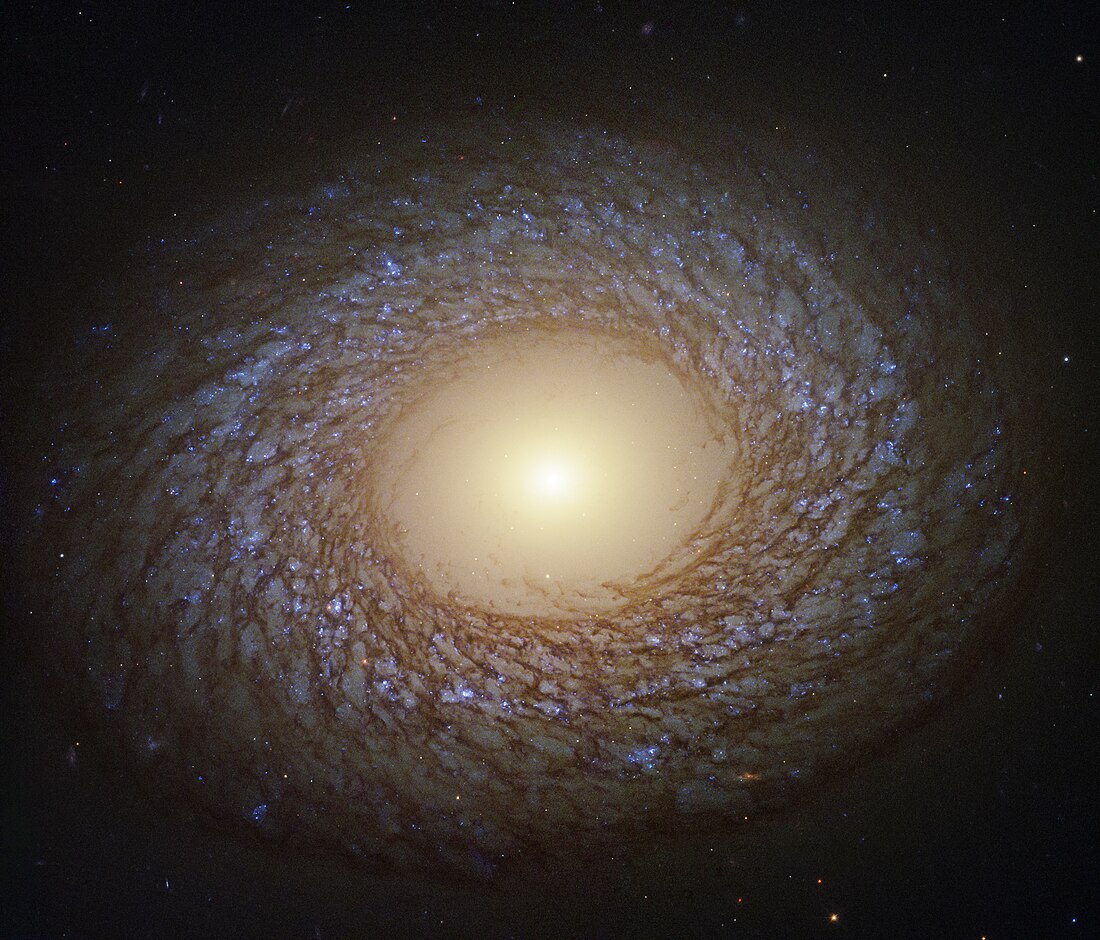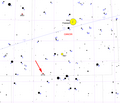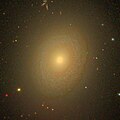Top Qs
Timeline
Chat
Perspective
NGC 2775
Galaxy in the constellation Cancer From Wikipedia, the free encyclopedia
Remove ads
NGC 2775, also known as Caldwell 48, is a spiral galaxy in the constellation Cancer. It is 67 million light-years (20.5 megaparsecs)[3] away from the Milky Way. It was discovered by William Herschel in 1783. NGC 2775 belongs to the Antlia-Hydra Cluster[10] of galaxies and is the most prominent member of the NGC 2775 Group, a small galaxy group in the Virgo Super-cluster, along with the Local Group. Other members of the NGC 2775 Group include NGC 2777 and UGC 4781.[11]
This object has a morphological classification of SA(r)ab,[6] which indicates an unbarred spiral galaxy (SA) with a prominent ring structure (r) and flocculent,[12] tightly wound spiral arms (ab).[13] The galaxy is inclined by an angle of 44° to the line of sight from the Earth.[6] The galactic nucleus is not active[2] and the large nuclear bulge, which extends out to an angular radius of 0.4′,[13] is relatively gas free.[12] An explanation for the latter could be a high supernova rate.[6] Although star formation is taking place in the dusty outer ring,[13] NGC 2775 does not display any current starburst activity,[14] and the galactic nucleus is virtually free of any star formation whatsoever.[12]
The galaxy's hydrogen tail feature indicates a past interaction with a faint companion.[6] A satellite galaxy appears to have orbited NGC 2775 multiple times, losing mass as it did so and creating faint, shell-like structures.[13] Nearby irregular galaxy NGC 2777 displays a tidal tail of hydrogen gas that points back to NGC 2775, suggesting the two may be linked.[15]
One supernova has been observed in NGC 2775. SN 1993Z (type Ia, mag. 13.9) was discovered by the Leuschner Observatory Supernova Search (LOSS) on 23 September 1993.[16][17] By September 25, spectral analysis showed that it had peaked about four weeks earlier.[16]
Remove ads
Gallery
- NGC 2775 imaged with a 32-inch telescope.
- Map showing the location of NGC 2775.
- NGC 2775 (SDSS DR14)
- NGC 2775 from the Hubble Space Telescope
References
External links
Wikiwand - on
Seamless Wikipedia browsing. On steroids.
Remove ads





